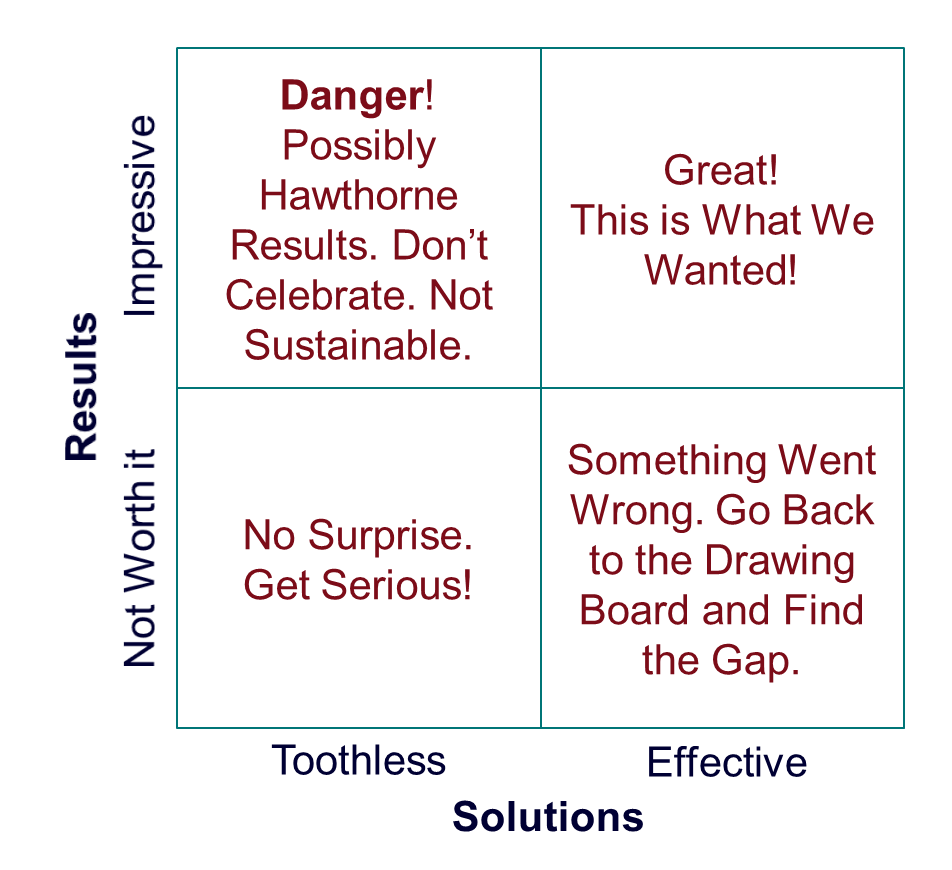Ensure a Cause and Effect Relationship
Effective Solutions that show Excellent Results. This is the dream of every project leader. This does not only refer to success. It also leads to the assumption that the solutions have addressed the root causes for the problem and in turn, generated the expected result.
Seemingly Effective Solutions that don’t show Expected Results. There is a multitude of potential reasons for this. It always means going back to the drawing board and searching for the gap, be it initial wrong assumptions, biased data, insufficient analysis or solutions implemented the wrong way.

Toothless Solutions that don’t show Results. This certainly does not come as a surprise.
Toothless Solutions that deliver Excellent Results. This constellation does sound unlikely. However, it is not. Sometimes, even without implementing any solution, the process improves and results get better – often to a remarkable degree.
When Toothless Solutions Deliver Results
This can be attributed to the Hawthorne Effect. Hawthorne says that observing a situation will change the same. It will likely appear in all environments where humans are “watched”.
Go Beyond Hawthorne
The only way of making sure that improvement effects will last, is to establish a logically consistent chain from description of the problem via potential root causes, data collection and analysis to identification of the vital few tackled by related solutions. Lean Six Sigma is what these steps are. Follow them carefully and you will be successful – beyond Hawthorne.


